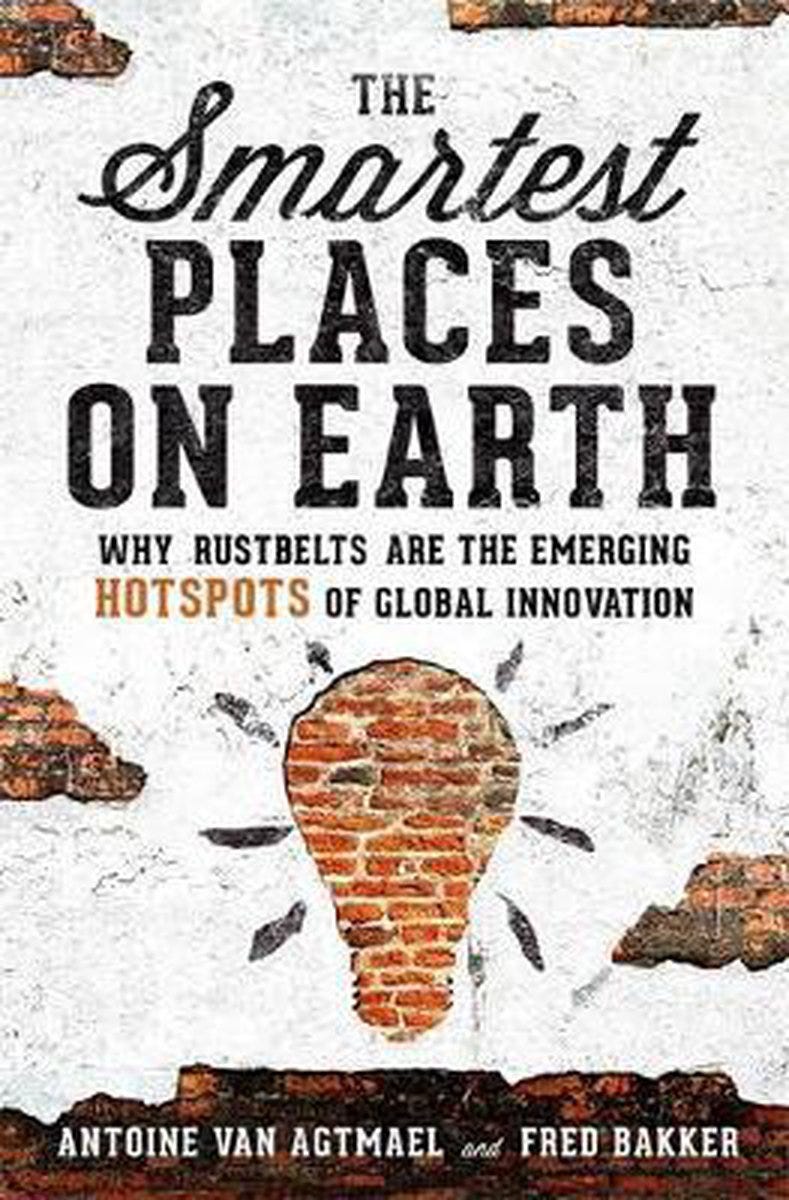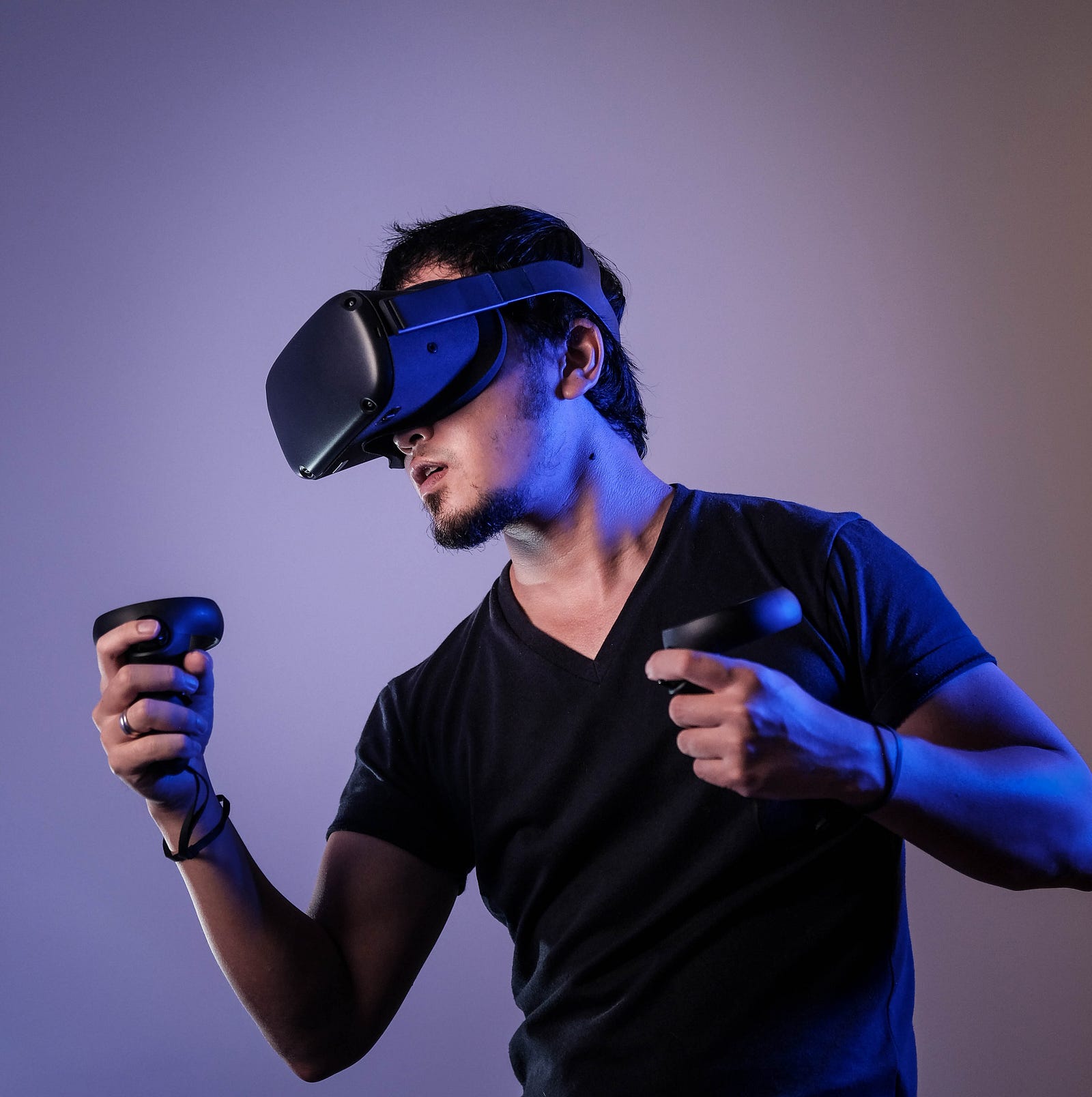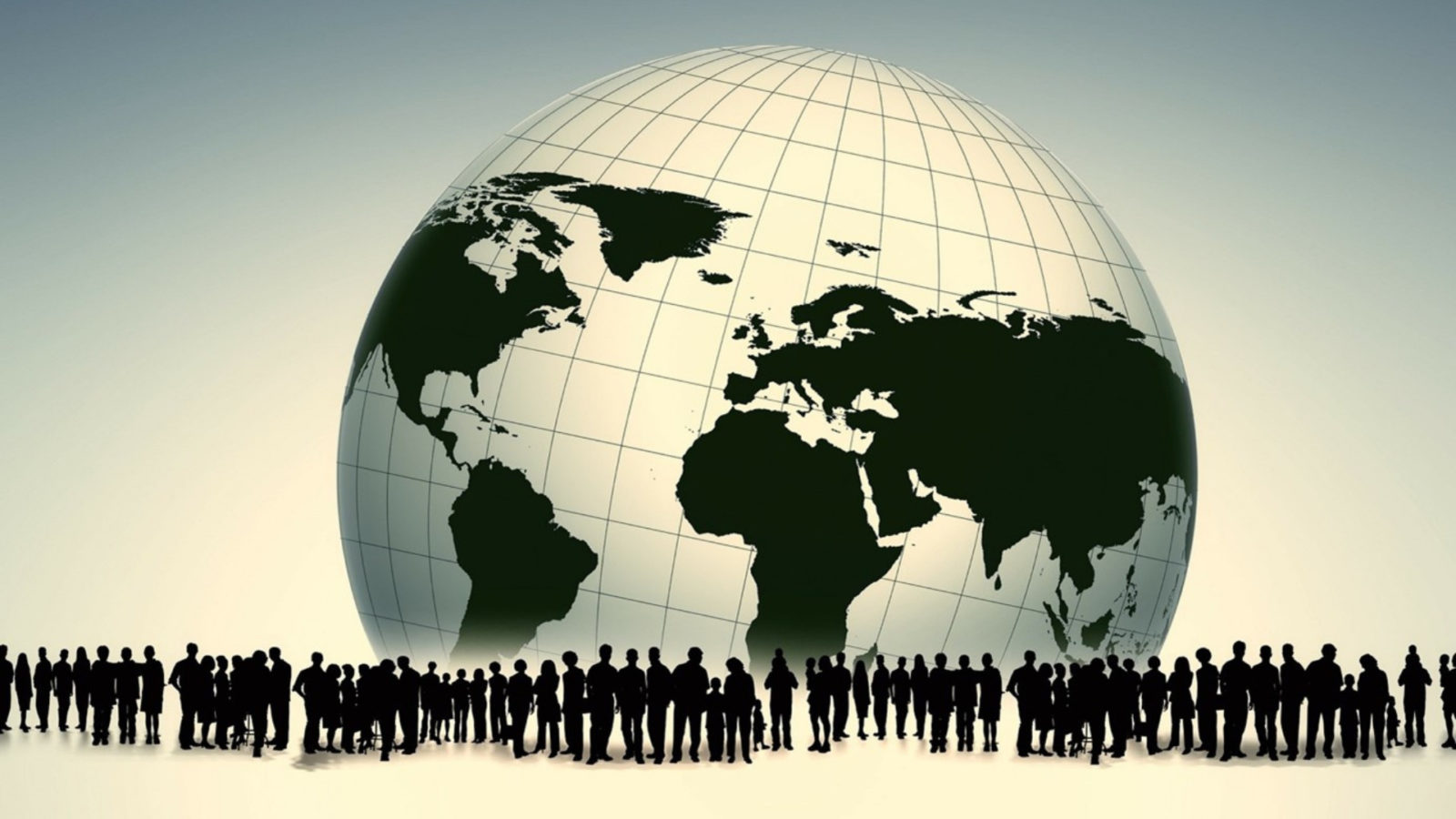THIS APP IS MAKING NEW YORK WORKERS GO BACK TO WORK AT THE OFFICE
April 14, 2021
EXPERIENCING HOME DINING AROUND THE WORLD
April 16, 2021CONNECT YOUR CAREER WITH THE COLLABORATIVE ECO-SYSTEMS OF THE FUTURE: IT’S FIT OR FAIL!
Once upon a time, especially in the West, the idea took hold that the most exciting innovations were born in garages inhabited by brilliant geeks who created unimaginable products and services to conquer the world — iPhones, social networks, search engine machines. Youthful genius seemed to thrive in splendid isolation. Think Steve Jobs. Think Mark Zuckerberg (not a garage, but a Harvard university room). Think Larry Page and Sergey Brin. And you’ve got the (b)romantic picture.
In our 21 stcentury though, that romanticism has become a thing of the past. This has to do with the Internet not being a baby anymore, but a behemoth that governs world business. Hardly romantic. Also, the globalized problems we face now, from corona to pollution, are simply too multi-tentacled for a garage. Splendid isolation is out. Sharing brainpower is in.
Last but not least, there is the fact that the most desired products and services we like to surround ourselves with, are characterized by multi-dimensional sophistication. Your next car, for instance, will also be your next mobile. The equipment that facilitates our workouts, will be enriched with a virtual skin monitoring all your exercising data in order to serve you more meticulously. Traditional banking is transforming itself into fintech and from there into fun-tech, getting more multi-layered with each step, satisfying our needs both deeper and broader. That sounds cool and it is. But these service products are too complex and sophisticated to create in brilliant isolation. They are the outcomes of brainpower shared. In this article, you’ll find five different inroads to illustrate this argument.
Take vaccine passports
At face value, vaccine passports don’t look like a very complex service product. They ‘only’ need to function smoothly. That though needs the collaboration of a palette of different experts and professionals. It starts with the vaccine producers. Everywhere they bring the vaccines, it is greeted with a collective sigh of relief. Protection against the severe consequence of the virus seems guaranteed. Unfortunately, though, we still don’t know to what degrees the vaccine also stops transmission of the virus. Neither do we know how quickly immunity wanes. Here virologists enter the landscape. After them follow more general health experts. They must assess how (un)healthy lifestyles influence virus vulnerability. In the meanwhile, the discussion will rise for what occasions a vaccine certificate should be deployed. For international travel only? For sitting on one-and-a-half-meter terraces as well? For festivals and football matches? And, vice versa: no certificate, no admission to the shop for groceries? Here political regulators and ethicists come in — plus sociologists to sense the Zeitgeist. Other thorny issues pop up as well. Laboratories have to be accredited. How to assess the criteria — internationally? And: how to include those who cannot afford a mobile phone or lack identification? How to include pregnant women and those with allergies? Some ethnic minorities seem to be more vulnerable to the virus. Must they be given vaccination priority? Here more sociologists and political scientists, and probably also philosophers, will be invited to the Collaborative Eco-System around the passport. Also, concerns about privacy and state surveillance will arise. And, of course, forgery experts must become part of the ecosystem as well. Plus those who can detect and fight cyber hacks. Last but not least, how to convince vaccination hesitators? Here mass communication professionals will be needed — and behavioral data-analysts.

A seemingly ‘simple’ service product like a vaccine passport can only rise to the occasion via an ecosystem where a kaleidoscope of skills and knowledge layers collaborate. Preferably on a worldwide scale in order to produce the same standards everywhere. It leads to the Rise of Collaborate Eco-Systems.
From rustbelts to smart belts; Are You A Brain Connector?

The rise of the Collaborative Eco-Systems doesn’t limit itself to vaccine passports. Antoine van Agtmael has been Division Chief at the World Bank. Fred Bakker has been CEO of ‘the Financial Times of Holland’. (Disclosure: I had a weekly column in the newspaper for several years.) Together they wrote ‘The Smartest Places on Earth. ‘ They researched the rustbelts of the Western world: those dilapidated industrial regions that have lost the international competition race, because many of their good jobs were outsourced to other parts of the world, primarily low-cost China.
Several rustbelts though have managed to bounce back. They are prospering again — having reinvented themselves under new conditions. Akron, for instance, Ohio, USA once was the center of America’s tire industry. When production went offshore, poverty and joblessness ushered in. Now the area is back as a brimming center of productivity, invention, and innovation around: new materials. Over a thousand startups are active, together employing more people than the leading tire factories of the past. The same dynamics play out in Lund, Sweden. When its mayor shipyard went bankrupt, it dragged the whole region down the drain. Today Lund prospers again around a new focus: life sciences industries. In my own country, the Netherland, Eindhoven was the great industrial city where both Philips’ lightning and car manufacturers resided. Decay set in when they left. Now the city has regrouped itself, being an international leader both in chips and sensors manufacturing and in next-generation health systems. Bakker and van Agtmael document many more convincing examples.
What the reborn rustbelts have in common, is that their second lives are intertwined with the deployment of Collaborative Eco-Systems. In all the authors’ best cases the three pillars of post-modern manufacturing have managed to join hands: government (1), sciences (2), and deep-pocketed corporates (3). On the government dimension, it very often are regional political leaders with a charismatic vision who empower the Collaborative Eco-systems. They guarantee their smooth running. Also, the sciences-dimension is essential. Research universities, with an open mind to collaboration, not in the least between their own departments, are a necessity for rustbelt’s renaissances — and actually for all smart businesses. The most decisive universities have layers of startups around them and enable them to connect to the big corporate players around. These constitute the third key-dimension: business capital (3).
Collaborative Eco-Systems aren’t easy to realize. Businesses are organized around competition, not collaboration. Closed minds and organizational silos are everywhere. Success often makes rigid. A serious sense of urgency though might turn the tide. The rustbelts’ downfall experiences often created the impetus to transform themselves into smart belts. Also, a visionary leader is badly needed. Van Agtmael and Bakker coin the term Brain Connector here. Someone who can connect the dots. And the people. And their multi-dimensional layers of knowledge. It all must be integrated for Collaborative Eco-Systems to fully function. Brain Connectors have the charisma to stimulate open-mindedness, to effectuate ‘de-silo-ization’.
Phil Knight, the former CEO of Nike, Portland, Oregon, is a good example of a Brain Connector. Knight made a 100 million dollar donation to Portland’s leading institute for early-stage cancer research. Deep pockets were brought in. Knight also networked to get the biggest regional hospital on board. Plus Intel. Intel was seeking to develop next-generation chips needed for genomics research. The hospital could deliver the data for Intel to experiment with. Also, FEI, a regional company that makes electron-beam microscopes, stepped into the ascending Collaborative Eco-System. Some of Oregon’s leading universities entered as well. Knight, once the international king of sneakers, became the visionary Brain Connector at the cradle of Oregon’s now world-class cluster of life sciences industries. He managed to connect the representatives of complicated layers of knowledge, and let them share their expertise.
This is an arising Collaborative Eco-System in action. It starts to happen everywhere. Below I describe three more.
Take the fitness industry
Traditionally, business dynamics in the fitness industry were relatively simple. There were the equipment producers and there were the service providers, the actual gyms. But then the industry realized it is more appealing, and more lucrative, to sell experiences instead of exercises sec. That broader perspective helped fitness to take off. Leading chain LesMills was one of the first to invigorate your body pumps with carefully curated music beats. Somewhat later, they created engaging video walls as well. In these ways, engaging entertainment was brought to the fitness mix. Let’s call it: exertainment. Then the leading gyms add another appealing layer of experiences. They extended the palette of exercise regimes that members could choose from. Train to your own taste and to your own mood, every moment. It’s personalization in action. They call it: fitness cocktails. Recently the industry has added another experience layer to their core service product, using your muscles. They thoroughly connect fitness to health and wellness. This way its appeal reaches across the body-obsessed young & beautiful to the older generations and their wellness portfolios. It also implies that fitness’s Collaborative Eco-System is now enriched with health professionals and food coaches. In the near future, the industry will build virtual skins over our bodies. The skins will monitor your heartbeat, your blood pressure, your muscle tones. Next step also: your exhaustion levels, hydration degree, and muscle tension per square centimeter. Next step, when AI really strikes: all the monitored data will generate super-personalized exercise suggestions and food advice.

The new waves of experiences will bring more success to the business. That success will depend on the quality of the Collaborative Eco-System on which it is built. The more the trainers, equipment producers, entertainment cracks, health, and food experts, but also the IoT, VR, AR and, AI knowledge elites can understand each other and share knowledge and insights — all tasks for the Brain Connector — the more prosperous the future of fitness will be. No glory without a Collaborative Eco-System.

Take top-luxury hospitality
Recently I interviewed Allison Styles, co-founder of MAZE, a consultancy that delivers crafted solutions to the luxury hospitality industry. In this segment, a stay in a hotel resort is no longer about the bed. It’s not even about the experiences being offered. According to Styles, the next steps will be about delivering transformative moments to the guests. These are moments and experiences that enduringly lift you up, physically, mentally, even spiritually. Styles is not talking about a regular three star hotel. She focuses on top luxury destinations, like Aman Hotels, Resorts, and Residence. Luxury travelers these days are taking significantly better care of themselves, not only corona-related but also due to the fact that we all live in high-pressured stress-societies.
At these transformative places yoga, gyms and steam baths have become ‘commodities’. It will be about the next step. From day one of your stay your vital signs will be measured and monitored. The data will be analyzed by sophisticated AI, resulting into super-personalized insights and advice (in line with what to expect from top-notch fitness coaching). In the Collaborative Eco-System supporting top-luxury destinations not only hospitality professionals will have a place, but also food, fitness and health experts. Plus data-analysts. Plus spiritual coaches. With regard to food, Styles remarks that of course, there will be attention to what you’ll put on your plate, but in order to reach serious transformation, your relationship with food will also be examined. Here psychotherapists enter the Collaborative Eco-System. Also, staff needs extra sophisticated training, as they must provide “360 degrees supportive, immersive and subtly hands-on” services. Which might bring in experts on emotional intelligence. When you are not super-rich you might wonder whether this all isn’t a bit exaggerated. However, we are already talking about a $$638 billion business.
As in fitness, so in luxury hospitality. Collaborative Eco-Systems are essential for paving the way to future success. It will always be about different skills and expertise opening up to each other and working closely together. Styles stresses that luxury travelers also start to demand that the industry shows serious care both for the planet and for their own staff. Employees’ exploitation strongly contrasts with the pursued transformative moments. This will brings sustainability consultants and human resource professionals into the Collaborative Eco-System.
Take excellent ceramics
Arita region in Japan has a 400 years old tradition of producing excellent ceramics. Many small and medium (family) businesses flourished over the centuries. But times are changing. The need for magnificent tableware is in decline. It has become relatively outdated as a marriage gift. Also, Millennials eat more informally — with a plate on their laps watching Netflix. And China delivers fierce competition. Above that, 400 years of success can make a bit smug, even rigid. Many companies don’t go broke, because they are not good at what they are doing. They go down the drain because they continue to do what they are good at: for too long. That might become a predicament for Arita.
In order to avoid this potential downturn, I conducted a series of depth interviews and an International Cool Ceramics Hunt to shake business up. Also here, delivering innovative experiences to consumers turned out to be the key concept for next step success. Also here we discovered that the creation of a supportive Collaborative Eco-System was essential. With food experts we discussed the creation of plates that would counteract bulimia. We discovered how inspiring connections with artists, with fashion and with furniture designers can be for next-generation ceramists. We brought hotel managers to the table to define what a bespoke dinner experience means in the best hotels — and how to translate it into the language of ceramics. With the Japanese market in decline, the local industry wants to go international. This implies collaboration with cultural anthropologists to understand fresh markets. Last but not least, we discussed what Google would do in the (rather unlikely) case they wanted to enter the market. Can the Internet of Things add a new dimension to future tableware?
Also when it comes to excellent ceramics we see the contours of a Collaborative Eco-System shaping itself.
You and the rise of the Collaborative Eco-Systems
It is happening in fitness, in luxury hospitality, in ceramics. It’s happening around the creation of vaccine passports. It is driving success in the smartest places on earth. It is the Rise of the Collaborative Eco-Systems as a validated trend. They will come your way too. They will force you to confront challenges, make new choices and ask yourself serious questions. Here are the key ones:
- Under the impending reign of the Collaborative Eco-systems: Are you ready to accept that you and your business can’t do it on your own? Can you accept that whatever your brilliance, you will be part of a bigger whole? Can you adjust to the inevitable?
- Can you relate to the very real existence of the increasingly powerful Collaborative Eco-systems?
- Can you assess whether your professional capacities and leadership skills will make it easy for you to participate in them?
- Can you describe the Collaborative Eco-System that fits your business? Do you have ideas and understanding on how to re-position yourself? Can you assess what you can bring to the Collaborative Eco-System, better than anyone else?
- Last but not least, in all Collaborative Eco-systems New Tech will play a key role — from the virtual skins on fitness club members to the IoT-plates you will eat your food from. How do your business and your core capacities relate to the New Tech? Here I re-quote Tylor Cowen, author of ‘Average is Over’: “The key question will be: Are you good at working with intelligent machines or not? Are your skills a complement to the skills of the computer, or is the computer doing better without you? Worst of all, are you competing against the computer?”
- Under what conditions could you play the role of a Brain Connector? — super-essential to a functioning Collaborative Eco-System.
One last remark: I firmly believe in the rise of the Collaborative Eco-Systems. I documented the trend here in five different regions. Undoubtedly there will be much more. I appreciate every suggestion!
Originally published at https://www.datadriveninvestor.com on April 1, 2021.




